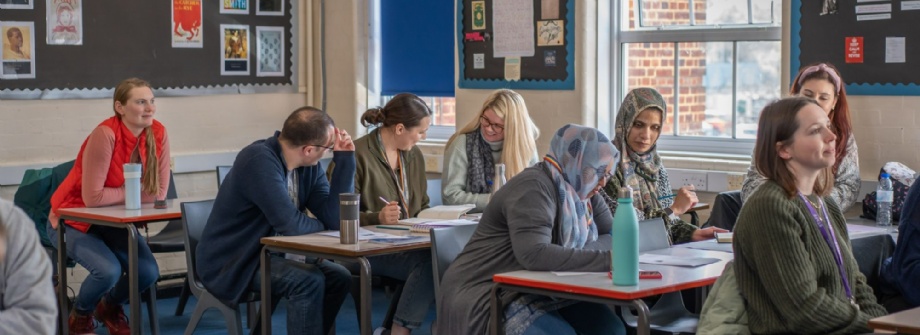Staff Blog // Organised Chaos: How Does Creativity Link to Essay Structure?

This blog is based on a recent session delivered at the Girls’ Learning Trust Staff Conference 2023 by Emily Jones (Nonsuch High School for Girls).
Creativity and essay structure aren’t two ideas that you would naturally link together. However, my recent session for the GLT conference sought to prove that these seemingly contrasting concepts do, indeed, have an important link!
Drawing on a research study that I carried out as part of an NPQ course in Leading Teaching, I began by asking myself a simple question: what does a truly interesting, creative essay look like in my subject? I concluded that such an essay can only be achieved through building up a sense of confidence with the desired assessment objectives.
My small-scale project involved an A Level class with whom I utilised a series of lesson starter activities focusing on specific (and explicit) aspects of essay structure and the skills involved in structuring an essay. Part of the NPQ course stressed the importance of planning explicitly for students with Special Educational Needs who may struggle with concepts such as essay structure. However, the course also highlighted the possibility of supporting students in this way by addressing concepts and skills that all of the students in the class would need to address so that every student could benefit from such intervention.
During the session, I explained my methodology: a self-report questionnaire both before and after the intervention, in which the students analysed their perceived confidence levels relating to the different skills required for writing an effective essay. Luckily, my evidence saw a general increase in confidence but I also addressed the potential for a lack of causality between the two sets of data. After all, as I explained, correlation does not necessarily equal causality. I also raised the issue of the difference between ‘perceived’ confidence and ‘actual’ confidence. How many times have we felt that something is going well, only to be proven wrong at the next turning?
The last section of my session asked participants to reflect on one small change that they could make in their lessons to improve an area that they perceive as a weakness in the essays that they typically read from students in their classes. One thing that really resonated with me from the course is the idea that it can sometimes be the smallest changes that have the biggest outcomes. An issue such as a lack of clarity in essays can seem like an insurmountable problem at times and so making one simple change at a time can help students to feel more confident as well as allow teachers to feel that they are able to make a difference.
Overall, I highly enjoyed my experience in sharing my research project with colleagues and it was great to meet my counterparts from schools across the trust and to share ideas about how to improve essay writing all the way up to A Level. I am now thinking about how I can apply these ideas lower down the school so that the new entrants into year 12 are as confident, and hopefully as creative, as possible!
Emily Jones
Nonsuch High School for Girls
